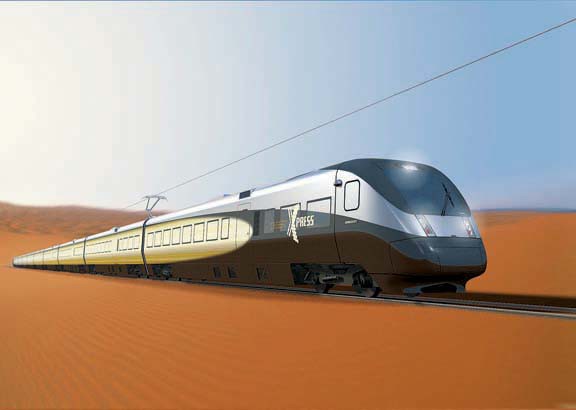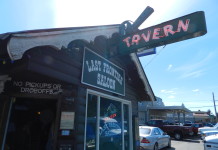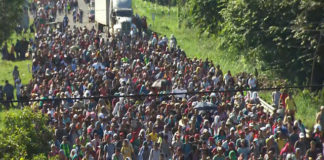
A Vegas-to-Victorville line may soon break ground, but questions remain as to just who will get on board?
By Mark Cromer
Anyone who attended high school or university in Southern California during the late 1970s and early 1980s had a fair chance of listening to a social studies teacher or engineering professor predict that by the time the students were middle-age they would be zipping comfortably across California courtesy of a high-speed rail network.
A rather bourgeois prognostication of that era, it foresaw environmentally sound rail at first complimenting the automobile for many Californians’ travel needs and ultimately replacing it over a generation or two.
It certainly made sense, but then so did converting to the Metric System.
But if cultural resistance has kept Americans as firmly rooted in their cars as they are committed to using measurements of miles and gallons (putting the United States in company with Burma and Liberia as the only remaining nations to not adopt the Metric standard), a high-speed rail line in the U.S. finally seems to be on the brink of reality.
If the DesertXpress manages to actually break ground this spring as expected, it will be on track to become the first high-speed rail line in the nation. Its appeal and prospect for success rests in its destination: Las Vegas. Its fundamental risk lies at the other end of the line: Victorville. Depending on whose asked, the proposed line either ends there as a result of the cost-prohibitive nature of crossing the Cajon Pass, the technology necessary to bring high-speed rail over the pass, securing right-of-ways or all of the above.
While an express train from the high desert to Sin City is probably not exactly what those whimsical futurists burned out on the individual excesses Me Decade envisioned, proponents sum it up with a tidy estimation: It’s a start.
“President Eisenhower didn’t sell the Interstate Highway System to the American people by saying ‘Wouldn’t you like to drive across the nation?’” says Tom Skancke, a veteran transportation lobbyist. “No, he sold that conceptually as network that would allow the effective mass transportation of troops through the country. He sold it as a strategic defense initiative. Then once it got going, it started to grow its own consumer support. High-speed rail is going to be sold along similar lines, in that it is an environmental and infrastructure necessity, essentially on par with national defense, and must be done. Once Americans start riding it, it will grow.”
Skancke, a founder of the multi-agency Western High Speed Rail Alliance, sees the Vegas to Southern California line as the beginning of a high-speed rail network linking Denver, Phoenix, Las Vegas, Salt Lake City and Los Angeles. If that seems perhaps overly ambitious given the three-decade paralysis America has suffered on high-speed rail, Skancke says the stars are finally beginning to align for high-speed rail; with an administration in Washington that sees rail as a keystone element of its agenda and states desperately hungry for infrastructure jobs that will put large numbers of men back to work.
And in metro areas like Greater Los Angeles, traffic lanes and airspace is simply at capacity, according to Skancke, and attempting to add more is no longer a solution, but rather a delusion that the status quo can be maintained.
Xudong Jia, a professor of civil engineering at Cal Poly Pomona and an expert on travel demand management, agrees that the time is ripe for the U.S. to develop a high-speed rail network and that the Victorville-to-Vegas line offers a critical foot in the door.
The paramount question facing DesertXpress, Jia says, is will the adage ‘build it and they will come’ play out for the rail line? Or will the Vegas power-players behind it find themselves holding a multi-billion dollar stiff?
Supporters believe enough people will pull off the freeway at Victorville and plunk down a C-note for a smooth, fast and safe ride into Vegas and back to Victorville again when faced with the nightmarish traffic snarls and drunk drivers that often make I-15 a race with the devil: you never know what’s going to happen. Skancke said as many as 3 million of the 11 million Californians traveling to Vegas each year by cars could make the jump to rail, with a peak weekend seeing as many as 150,000 riders on the line.
“The feasibility of this proposal really rests in how confident can they be that they will be able draw enough passengers away from cars and planes,” Cal Poly’s Jia says. “They have to honestly ask themselves who is their rider? Where are they? How many of them are there? How often can they realistically be expected to make use of this line? What are they deriving their passenger projections on? Hopefully not Europe or Asia, since this is America and California, where an entirely different culture is in play. They are flying in the dark.”
Since DesertXpress is seeking multi-billion dollar financing from the federal Railroad Rehabilitation and Improvement Financing program, a crib death for high-speed rail in the California and Nevada deserts would leave taxpayers holding the bag and have profound implications for the future of passenger rail.
That’s why the Victorville station is such a wild card.
“Their rider projections are pure speculation,” said M. Neil Cummings, a Los Angeles attorney and president of the American Magline Group. “The termination point in Victorville is just deadly, no matter how they try to spin it.”
Of course, it’s not like Cummings is a passive observer who doesn’t have a horse in the race. Cummings group has long championed an alternative high-speed rail proposal that would use cutting-edge magnetic levitation technology to take passengers from Anaheim and Ontario to Las Vegas in nearly the same amount of time the DesertXpress would be able to whisk riders from Vegas to Victorville.
Maglev, as the technology platform is known, is already in use in China and coming online in Europe and can propel rail cars at speeds in excess of 300 mph. The DesertXpress project calls for electric cars on a traditional ‘steel-wheels’ platform that can hit speeds in excess of 200 mph. For all of Maglev’s ultimate promise—none of which is really diminished by the rise of DesertXpress—perhaps its greatest challenge was coming online fast enough with what’s essentially a virgin platform on a longer route in time to take advantage of the shifting sands surrounding rail.
While the Maglev proposal seemed to have the wind at its back for years, its fortunes shifted suddenly in Nevada last year when Senate Majority Leader Harry Reid effectively dumped it during his tight reelection campaign in favor of DesertXpress. Reid’s sudden horse-trade smacked of crass politics, as DesertXpress investor and Nevada GOP player Sig Rogich announced his forming of ‘Republicans for Reid’ shortly after Reid’s announcement.
But whatever juice they line up inside the beltway and however deep the marker Uncle Sam cuts them, the Cajon Pass looms like the Donner Pass in cruel winter if DesertXpress can’t find a way into downtown Los Angeles, the OC and the Inland Empire. And they know it.
Plans currently call for a Victorville to Palmdale rail extension, which would then put riders a transfer or two away from Union Station downtown, but that’s far from a done deal and some skeptics believe it may never happen.
Veteran journalist Steve Sebelius, who has covered politicos from Sacramento to Las Vegas and has followed the push for a high-speed rail corridor, says the Palmdale extension may be either the salvation of DesertXpress, or its Achilles heel.
“Look, if you don’t get the Palmdale to Victorville link, you’ve essentially got a train to Victorville. And that’s a train to nowhere,” Sebelius says, noting that Rogich has been trying to tamp down concerns. “He’s telling everyone who will listen, ‘Don’t worry, Palmdale is going to happen,’” Sebelius says. “If I were a prospective investor, I would want guarantees that Victorville and Palmdale will be linked—soon—and Sig can’t give guarantees like that.”
But for all the hurdles that high-speed rail has to jump—culturally, politically and economically—and for all those that still remain, one only need to visualize traffic on the I-15 between Barstow and Vegas to induce nausea. Or consider the pleasantries of airport parking, security and the comforts of economy class for a stress-inflicted migraine.
Come what may, one thing is clear: a high-speed train is leaving the station.
And some of the most serious players in Vegas are betting it’s going to be theirs.
This article was first published in the LA Weekly.










